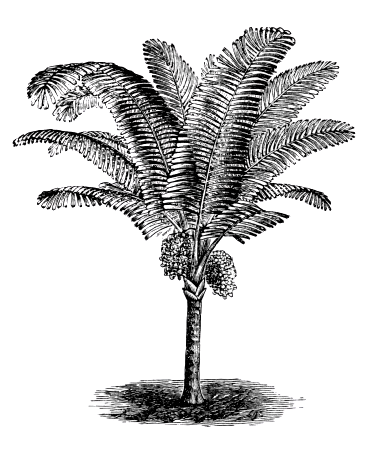Results of reforestation
In Sulawesi as well as in Kalimantan, Masarang has founded several nurseries and arboreta.
Young trees are cultivated and will be used in reforestation projects at a later stage. Local schools, church congregations, and NGOs helped to plant these young trees. In this way trees such as the Tjempaka, the Pakowa, and the sugar palm are cultivated. Masarang is a certified supplier of surplus sugar palm trees in Indonesia.
In addition to these valuable trees, seedlings of tree species that are on the verge of extinction are grown in the nursery. Like this, knowledge is acquired on these threatened species and enough seeds are gathered so that the species can be restored into ecosystems and protected into the future. One example is the Kaima, a fruit tree that was close to extinction before Masarang began to cultivate it and plant it in forests. The Palawas, a rare Eugiana species, is another example.
Reforestation West-Kalimantan
In 2012 and 2013 Masarang is providing 40 000 sugar palms along with training for around 1000 farmers from more than 100 Dayak villages. The farmers learn to tap the sugar palm and are educated about the many uses of the tree. We are also working to help the Dayak people to acquire property rights over the land they have lived in for centuries. This way oil palm companies can no longer easily abuse the ambiguities around customary land rights.
Reforestation Pulisan
Nearly 10 years ago Masarang reforested 80 hectares of the degraded valley in Pulisan (North Sulawesi). On the bare grassland surrounding this forest a 1000 new sugar palms have been planted.This reforestation project in the valley in Pulisan houses trees such as the Tjempaka, Pakowa and sugar palm; it has improved the hydrological cycle of this area with a result that Timbukar, a village 10 km away, now has a clean water source. Furthermore, a variety of birds and wild boar is living in the woods. Recently, some farmers observed a few black macaques.Around the forest lay a large area of bare grassland. Masarang ranger Sonny Ering, under the guidance of forestry expert Harry Kaunang, has planted 1000 sugar palms. We were able to do this thanks to the financial support of our sponsors. In this way, Masarang has begun to take the next step in the reforestation surrounding Pulisan.
SUPPORT the reforestation
Your donation is key to restore the rainforests of Indonesia, preserve the habitat for endangered animals, and help local communities to live in balance with nature. Together, we can make a difference!
Support us



Reforestation Masarang mountain ridge, North Sulawesi
Masarang mountain ridge was logged, burned and eroded for over a hundred years until we bought it in 2001 and completely reforested it. In succession different plant and tree species were planted, and a diverse forest grew here once again. Now the forest is actively maintained and protected by the local population in collaboration with Masarang.The reforestation has achieved the following:
- Approximately 1 million trees have been planted.
- Reforestation absorbs approximately 5.000 tons of CO2 per year.
- A river originating in the mountain range, which had disappeared 50 years ago, now flows continuously again.
- Seven formerly dried up water sources around the Masarang mountain produce water again and are stable. The sources of Uluna and Tataaren are of great importance for the drinking water supply of the local population.
- Floods in the village of Matani, which sometimes took place 3 times per year, are a thing of the past because the new forest has greatly improved the hydrological functioning of the soil.
- Through sustainable forestry and selective harvesting, economically valuable wood has been extracted.
- The forest provides jobs in local house construction, sustainable forestry, and sugar palm and fruit cultivation.
- Rainfall in the area is significantly increased and the local temperature significantly reduced
- Lower farming lands are fed by springs; because of the now constant water supply about 500 hectares of rice paddies now produce one harvest extra per year which corresponds to an additional quarter of a million kilos of rice for the local populace.
- Flora and fauna have come back to life. Owls, for example, have made their appearance and the famous Celebes toad and plants that are named after the mountain such as Osmoxylon masarangense and Begonia masarangense have returned.
- The new forest area is also an educational area for school children. The University of Manado holds regular excursions and their students do research on Masarang mountain.
- Protection of birds that use the mountain as a migratory route. Specifically, the large quantities of birds of prey fly over which fly over twice a year.


